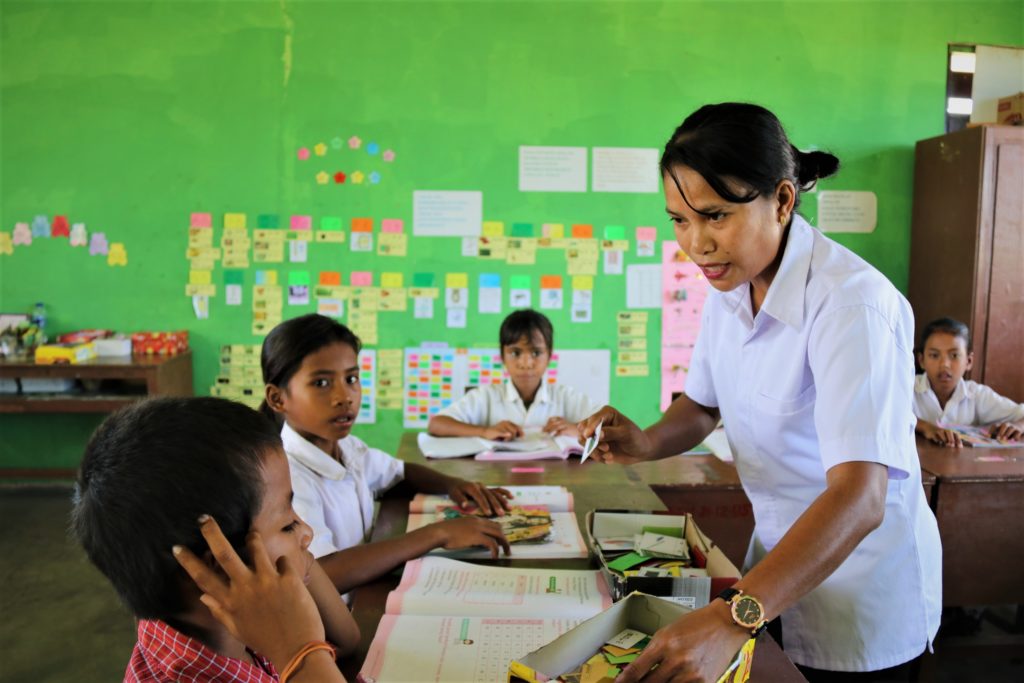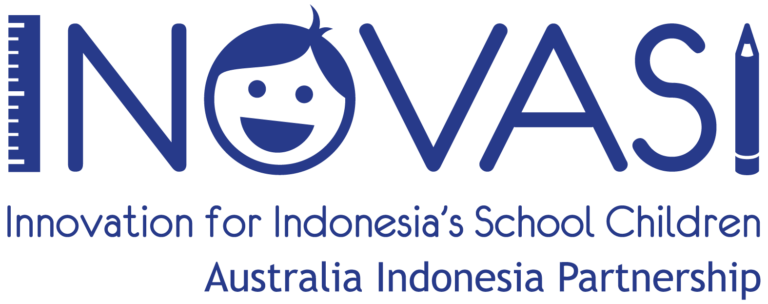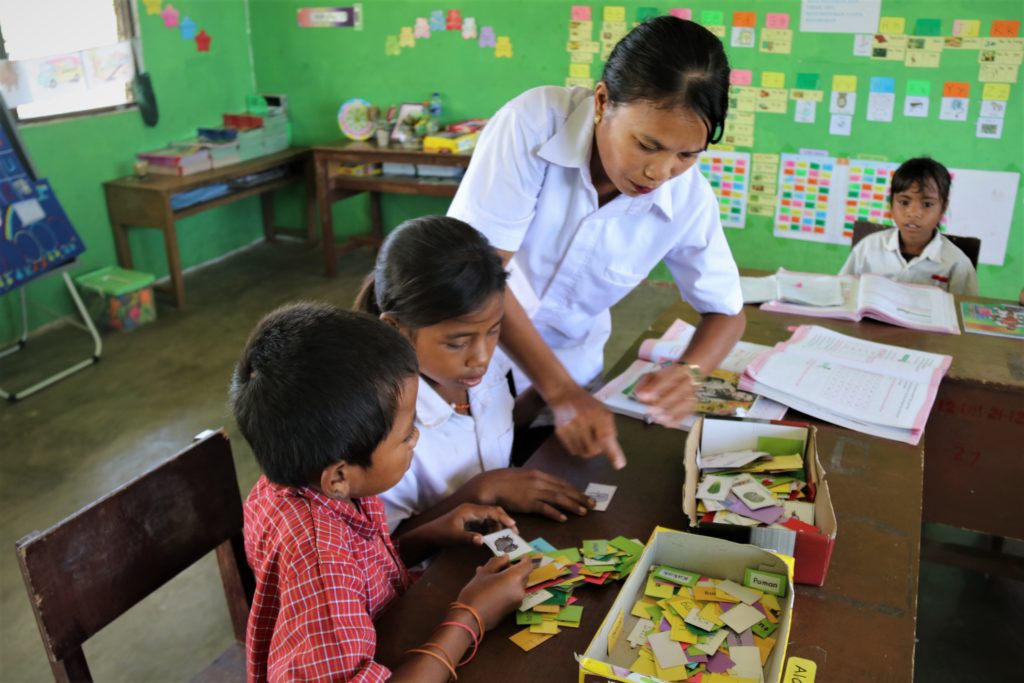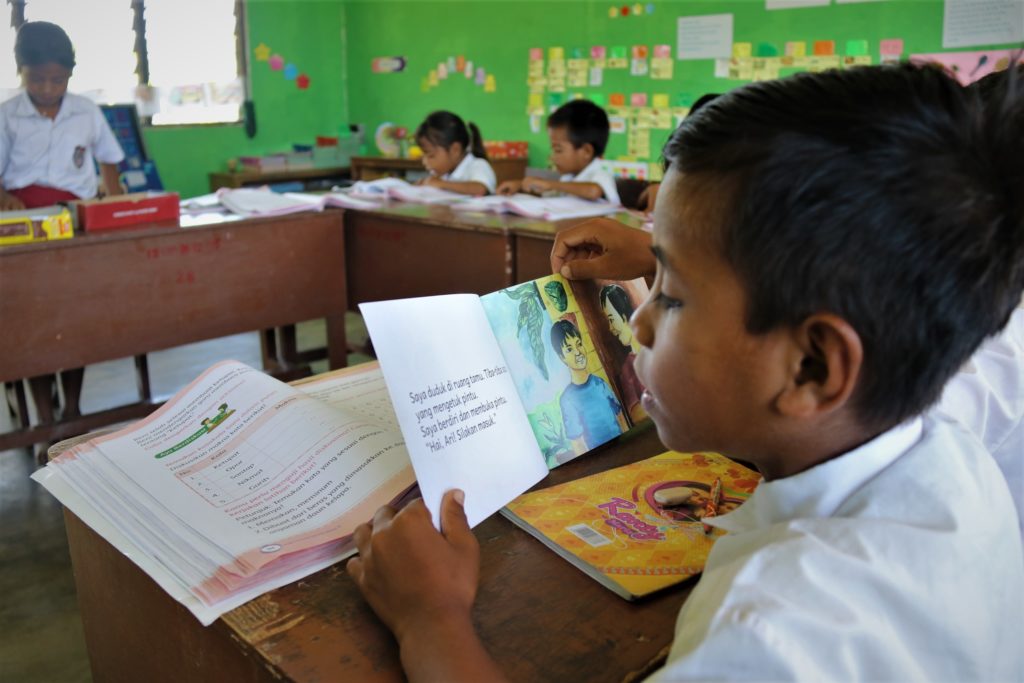
The reason for this is not because these schools don’t want to apply this learning concept—it’s because school resources, in this case the teachers and supporting facilities, especially learning media, have felt inadequate to meet the learning needs that this type of learning requires, noted Debi Uru Djawa, one of INOVASI’s assisted teachers at SDN Papu state elementary school in East Sumba regency, East Nusa Tenggara (NTT).
““After I attended the INOVASI trainings for the early grade literacy program, I realized that my teaching method to date had been centered on me,” Debi, a grade 2 teacher, said.
Debi said that in the past, she only lectured and let her students listen. “I never really knew each of my students’ abilities,” she explained. There are only a handful of students (eight) in Debi’s class; however, the way she was teaching prevented her from getting to know more about her students’ abilities.
“To be honest, at that time, I only taught ‘as is’ and considered all of my children’s abilities as equal,” she said.
As a result, her students’ ability development—especially in reading—was very slow. Debi admits that before she started applying what she learned during the INOVASI training, some of her students didn’t know the entire alphabet. There were also some students who couldn’t distinguish letters of the alphabets that look similar, such as b and p. Back then, you would rarely find learning media in her school.
“I only showed them pictures in textbooks and then linked these pictures to the environment or the students’ daily lives. Many students had difficulty in understanding words that they were not yet familiar with, especially those who use the regional language as their daily language of communication. If they didn’t understand, I would explain it in their local language,” says Debi.
The slow development of her students’ abilities made Debi uneasy. She strives to make learning fun for her students, and she wanted to make her own learning media. However, she also realized that she didn’t yet have the capacity for that. Debi recalls, “I didn’t even know what to do and how to do it.”
She wanted to take advantage of the information technology; however, the telecommunication network was still inadequate. The electricity line has not even reached this elementary school.
Changes in Teaching and Learning Practices in the Classroom
SDN Papu is a target school for disseminating the first early grade literacy program, which was funded by the regional budget (Anggaran Pendapatan dan Belanja Daerah, or APBD) of East Sumba regency. This school then became INOVASI’s direct partner for the implementation of the second early grade literacy program, which was held during the second semester of 2020.
Debi feels at ease now. She now has a more in-depth understanding of her students’ individual abilities. They are grouped according to their reading ability. Out of her eight students, three of them can read fluently and three of them can read words; the other two are still struggling with syllables.
When they are learning, each group is given a learning method and media tailored to their abilities. For the syllable group, Debi gives the students two boxes of cards. The first box contains picture cards, while the second box contains syllable cards. Students are asked to take one card from the first box and say the name of the object drawn on the card. Afterwards, the students look for syllables that make up the name of the object and arrange them into a word. The students are also given the opportunity to play with word cards—they look for word cards that match the names of the objects on the picture cards.
Meanwhile, the word group uses the Friendly Word Digest (Ramah Cerna Kata, or RCK) book to continue practicing their reading skills, especially punctuation and intonation. They then retell the story, both verbally and through pictures.
In the fluent group, students use the tiered books and do reading relay by reading sentence after sentence until one story is completed. After that, Debi probes them in order to gauge their understanding of what they have just read.
Fun is the word that Debi uses when asked about her students’ responses to the learning method that she is applying. “Children are much happier to learn. Their willingness to learn is high. Their abilities have also developed more quickly. In no less than a semester, there is already a student, who can read fluently, and those who read words are getting more fluent. This also applies to those who read syllables,” explained Debi.
Debi, who has been teaching at SDN Papu since 2017, admits that the INOVASI program has helped her to improve her teaching capacity.
“I now know the abilities of each student, how to classify them, and how to develop strategies and learning media that are suitable for them,” noted Debi.








